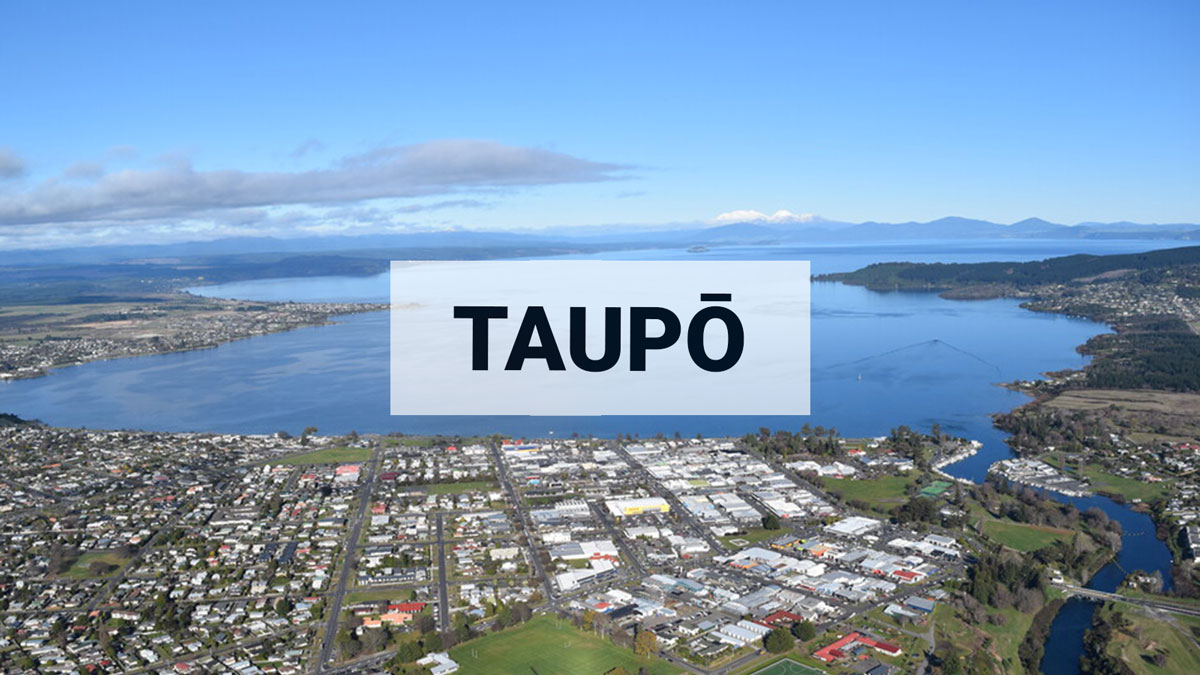
Taupō Volcano remains in minor unrest despite earthquake activity having almost returned to normal. Volcanic Alert Level remains at Level 1.
The number of earthquakes at Taupō Volcano over the last few weeks has decreased and almost returned to what is normally seen. Meanwhile, uplift of the floor of the central part of Lake Taupō continues. The volcanic alert level remains at 1.
Since the start of the current unrest period in May 2022, we have recorded over 1750 shallow earthquakes under Lake Taupō. The largest earthquake to date occurred on 30 November 2022, a magnitude 5.7 event at about 9 km below the lake surface. About 825 (47 %) of all the earthquakes since May 2022 were aftershocks associated with this main event. There have also been 4 other earthquakes over magnitude 4. The number and size of earthquakes, including the number of magnitude 4 to 5 events, is within our expectations for Taupō volcano at volcanic alert level 1.
Since the start of 2022, the earthquake activity can be divided into 5 blocks (Figure 1): A. 1 Jan 2022 – 30 April 2022: Pre-unrest. This shows a normal level of earthquake activity
B. 1 May – 15 September 2022: Initial period of heightened earthquakes
C. 16 September – 29 November 2022: Earthquake activity is lower, but still above that before unrest started
D. 30 Nov – 31 Dec 2022: Magnitude 5.7 event and it’s aftershocks
E. 1 Jan 2023 – 2 April 2023: Earthquake activity is lower, but still above that before unrest started
Over the same period of time, we have observed uplift at Horomatangi Reef at an average rate of about 60 mm per year.
What does the unrest mean?
Long-term scientific research at Taupō volcano suggests that there is a “magmatic mush” at 5 – 11 km beneath Lake Taupō. This mush is a mixture of molten magma and solidified crystals. Over time, new magma is supplied to this mush from deeper levels. We interpret that the current unrest episode has been caused by an increase in the rate of magma supply into the mush body, with similar processes occurring during earlier unrest episodes. We know of at least 18 such episodes in the last 150 years, including 2019. The transfer of heat and fluids into the mush body is creating stress at depth. The consequence of this has been more and/or stronger earthquakes, as observed over the last 10 months and ground deformation. The supply of magma to the mush zone is an ongoing process at Taupō volcano and changes in the rate of this supply over time are not unexpected.
All known unrest periods at Taupo have ended with the number of earthquakes and the rate of uplift returning to normal levels. None of these previous unrest episodes, have resulted in an eruption. It is likely that the processes behind the current unrest activity are also responsible for the previous episodes of unrest.
What is happening now?
The current unrest episode has now lasted for about 10 months. The rate of shallow earthquakes has declined overall since the start of 2023 (see period E in Figure 1) and is close to returning to levels last seen before May 2022. The rate of uplift at the surface may also have decreased over the same period. However, as the rates are very slow it is difficult to confirm this in the short term. Any decision to lower the alert level will be based on both the rate of uplift and the earthquake activity as well as any other relevant information.
Therefore, the Volcanic Alert Level remains at 1 at Taupō volcano, and the Aviation Colour Code at green. We continue to actively monitor the volcano and, when we have more information, will share this.
The Volcanic Alert Level reflects the current level of volcanic unrest or activity and is not a forecast of future activity. While Volcanic Alert Level 1 is mostly associated with environmental hazards, potential for eruption hazards also exists. Further information about the Volcanic Alert Levels and what they mean can be found here. More information about caldera unrest can be accessed from this report.
Paul Jarvis
Duty Volcanologist
Media Contact: 021 574541 or media@gns.cri.nz
The Tūwharetoa Māori Trust Board (CEO Rakeipoho Taiaroa) is closely involved in discussions as the landowner of Lake Taupō. More information about the Trust can be found at https://www.tuwharetoa.co.nz/.
We acknowledge the contribution of colleagues from Te Herenga Waka – Victoria University of Wellington in analysis and interpretation of some of the Taupō data.
Although we can’t prevent natural hazards, we can prepare for them – and we should.
Know what warning signs to look out for, so you can act quickly. Drop, Cover, and Hold during a large earthquake. If it is Long or Strong, Get Gone! People near the lake front should move to higher ground as soon as it is safe to do so, especially if they hear loud noises or see unusual lake action during earthquake activity.
During volcanic activity, follow official advice provided by your local Civil Defence Emergency Management Group. More information about Civil Defence in the Taupō District can be found here.
For information on preparing for earthquakes or responding to volcanic activity, there are guidelines from the National Emergency Management Agency's (NEMA) Get Ready website.
Prepare your home. Protect your whānau.
There’s a lot we can do to make our homes safer and stronger for earthquakes. Toka Tū Ake EQC’s website has key steps to get you started.

